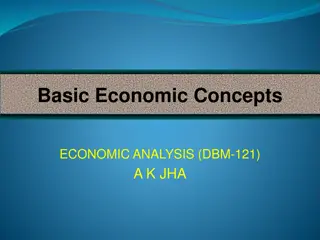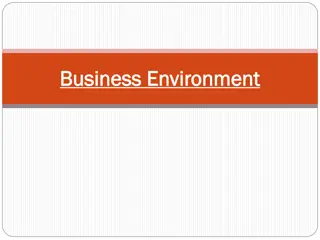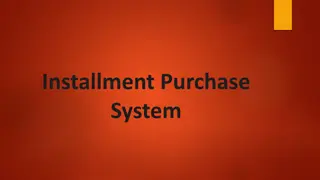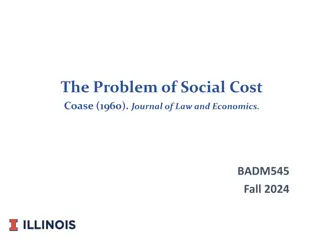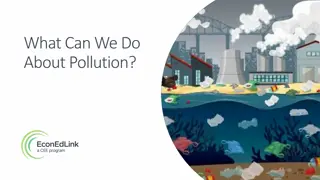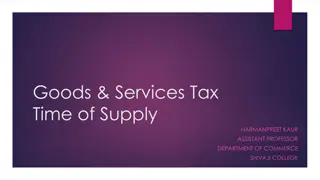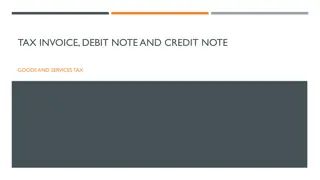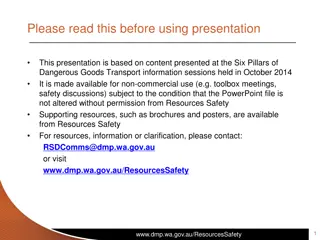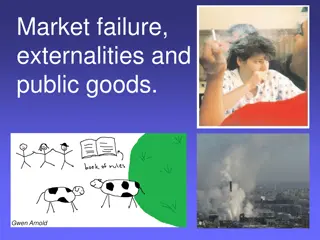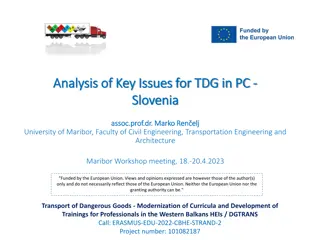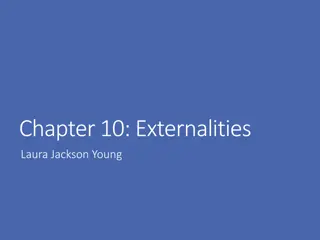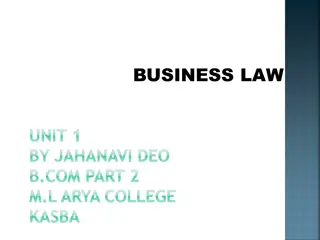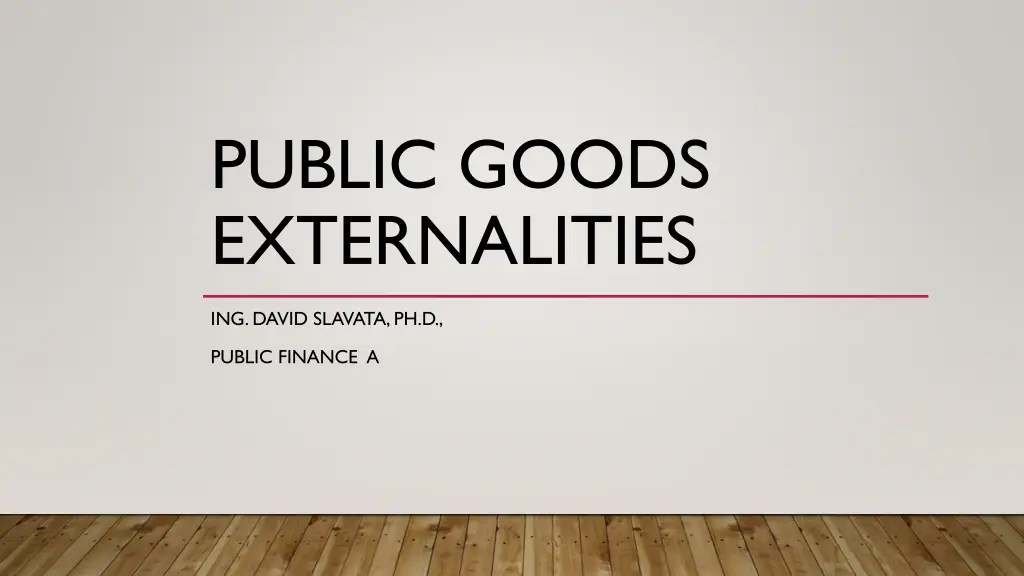
Understanding Public Goods, Externalities, and Market Failures in Economics
Explore the concepts of public goods, externalities, market failures, and the classification of goods in economics. Learn about market and non-market goods, state price regulation, and the economic views on goods' excludability and rivalry. Discover examples of private goods, public goods, common property resources, and club goods. Understand the nuances of different types of goods and their consumption patterns.
Download Presentation

Please find below an Image/Link to download the presentation.
The content on the website is provided AS IS for your information and personal use only. It may not be sold, licensed, or shared on other websites without obtaining consent from the author. If you encounter any issues during the download, it is possible that the publisher has removed the file from their server.
You are allowed to download the files provided on this website for personal or commercial use, subject to the condition that they are used lawfully. All files are the property of their respective owners.
The content on the website is provided AS IS for your information and personal use only. It may not be sold, licensed, or shared on other websites without obtaining consent from the author.
E N D
Presentation Transcript
PUBLIC GOODS EXTERNALITIES ING. DAVID SLAVATA, PH.D., PUBLIC FINANCE A
THE MARKET FAILURES Public Goods Externalities Imperfect Competition Asymmetric Information
THE CLASSIFICATION OF GOODS Institutional view Economical view
INSTITUTIONALVIEW Market goods Non market goods
THE MARKET GOODS The market goods are distributed and alocated by the market. The market price, which is the equilibrum of supply and demand is the main factor to whom it will be distributed.
THE NON MARKET GOODS The distribution of goods do not depend on the market price. Mostly it depends on the decision of the government.
THE STATE PRICE REGULATION Administrative prices Cost based prices Time directed prices Moratorim
THE ECONOMICALVIEW Excludability - the possibility to exclude anybody from the consuming of the good. Rivality - means the possibility of reducing the quantity of available good by the consumption to any other.
Rivalrous Non rivalrous Exludable Private good Club good Non excludable Common property Public good resources
THE SAMPLES Private goods - pencil, bread...etc. Public goods - roads, city lights, defense, police..etc. Common property resource - lake for fishing Club goods - CabelTV, NATO
THE PUBLIC GOODS Colectively consumed Privately consumed Semiprivately consumed
THE SAMPLES Market private good Non market private good Non market public good Market public good
EXTERNALITIES A cost or benefit that occurs when the activity of one entity directly affects the welfare of another in a way that is outside the market mechanism.
THE CLASSIFICATION Positive externalities Negative externalities Reciprocial
THE NEGATIVE EXTERNALITIES There is a negative effect from the production of the entity. Pollution Chamicals
THE POSITIVE EXTERNALITIES There is a positive effect from the activity of the entity. Agriculture - bio agriculture Fisherman societies
RECIPROCIAL There is a mutual benefit from the entity activity. Sample: Beekeeper and gardener.
THE INSTRUMENTS Taxes Fees Emmission permits Subsidies Legal protection
PIGOUVIANTAXATION a tax devised by Arthur Cecil Pigou (1877 1959) to remove the negative external impact. According to Pigou, environmental polluters must pay a tax equal to the difference between actual and social costs when producing a commodity or using a polluting technology.
THE COASETHEOREM In a competitive economy with complete information and zero transaction costs, the allocation of resources will be efficient and invariant with respect to legal rules of entitlement. The problem of negative externality can be solved without the need for governmental intervention. The condition of clear property rights.
THE SAMPLE Factory owner and farmer pollution causes the harm to the farmer for 100 USD as negative externality the externality can be eliminate by the investing of 50 USD to the factory In case of the valid claim of the farmer the factory owner gladly will invest 50 USD to avoid the paying the 100 USD to the farmer. In case of valid claim of the factory owner the farmer would gladly pay 50 USD to the factory owner to invest to his factory to prevent the pollution which avoid the harm of the farmer in sum of 100USD.


